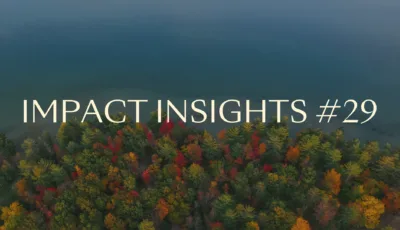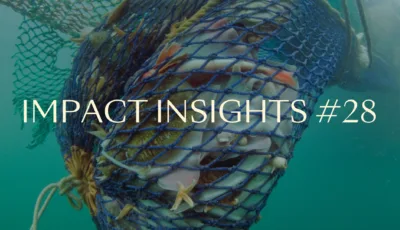Impact Insights #2

With so much happening in the world of impact and sustainability, it can be challenging to stay on top of the latest trends and developments. That's why our impact team has put together Impact Insights. A monthly series to help you stay informed and ahead of the curve. So sit back, relax, and get ready to expand your knowledge on the latest impact and sustainability news from February.
Curated by Norselab's former Sustainability Strategist, Åsne Burgess Øyehaug.
■ Sustainability-linked bonds disappoint, so far.
Sustainability-linked bonds (SLBs) are bonds tied to sustainability-linked time-bound targets, such as emissions reductions. The bonds offer lower interest rates to issuers that meet the targets. There is a growing trend in SLBs, with some sources estimating that over USD 75bn in SLBs were issued last year.
Disappointingly, a new Barclay’s report found that many of the targets for 2022 and 2023 will likely be missed. This casts doubt on the willingness of issuers to step up and drive the changes needed when faced with external macro challenges.
While SLBs offer great opportunities if regulated, they have also been found to function mostly as a financing mechanism to benefit companies, and not the planet, as we noted in our previous newsflash. In a deep-dive on SLBs in the maritime sector for Meaningful Impact High Yield , we saw similar findings: there is a lack of ambition in sustainability-related goal-setting, and, in some cases, failure to report positive developments since the previous issuance.
■ The challenge ahead for the UN Sustainable Development Goals (SDGs).
According to a new report from Norad, the Norwegian agency for development cooperation, the goals will be extremely expensive to meet with a great financing gap to overcome. For example, the world is now on track to have 600 million people living in extreme poverty by 2030, in stark contrast to the “zero poverty” goal.
There is a silver lining: the report finds that private capital has contributed more than expected. Mobilizing more private capital is key to achieving the goals, which is why two UN agencies last year joined forces to strengthen investor tools for the SDGs. The SDGs continue to provide a roadmap for investors on the most pressing issues we face; if you want to make a substantial impact towards sustainability, follow the SDGs. Impact investing aligned with the SDGs, with its intentionality, additionality, and measurability, is a concrete way for investors to contribute towards the SDGs.
■ The green industry subsidy race.
Last fall, the U.S. passed the Inflation Reducations Act (IRA), the biggest climate legislation in American history (why the non-intuitive name? Read here). The act injects over USD 300bn into green projects in the U.S. by providing tax credits and other subsidies to industries such as solar, wind, and nuclear. The EU’s perhaps strongest industry climate policy to date, the tax scheme on emissions, has been considered a “stick” rather than a “carrot”, compared to the IRA.
However, in an announcement on February 1st, the EU Commissioner drew up a plan for a similar incentive program: a new “Green Deal Industry Plan”. The goal is to increase European green manufacturing for e.g., batteries, windmills, heat pumps, solar, electrolyzers, carbon capture, and storage through different EU funding mechanisms. The new plan, with its incentives, is clearly an “answer” to the IRA.
It seems like we’re witnessing a transatlantic subsidy race to support the green transition.
■ A renewable energy breakthrough.
According to a new report from Ember, wind and solar energy accounted for ⅕ of the energy provision in Europe in 2022. This means that for the first time in history, energy supplied from wind and solar power accounted for a larger share than nuclear and gas. The report points out that external factors, like the cut-off of Russian gas supply, droughts, and nuclear outages, contributed to this.
And, the predicted rise in power from coal was slower than expected. To many, this is the start of the tipping point that’s been predicted; the IEA predicted last year that renewables will overtake coal by 2025. And as we’ve reported before, the surge in renewables is predicted to be 30% higher than the growth that was forecasted just a year ago.
Sign up to our newsletter to get the next Norselab Impact Insights straight into your inbox.


